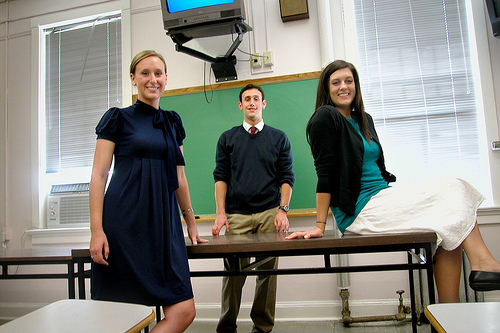Louisiana’s Recovery School District is improving student performance by creating the country’s first choice-based, charter-school district, and a new guidebook shows other cities how they can do the same.
Hurricane Katrina destroyed 100 of New Orleans’ 127 public school buildings when it hit at the beginning of the 2005-06 school year. At that time the Orleans Parish School Board (OPSB) ran the state’s worst-performing school district, and parents had few school options.
The district was bankrupt, superintendent turnover was high, and the FBI even moved into the school board’s building to keep up with its high volume of fraud investigations. Meanwhile, dropout rates at some New Orleans high schools reached 30 percent, and almost 80 percent of New Orleans students attended failing schools.
Today, the percentage of students in failing schools has been cut in half, to 40 percent.
The proportion of students attending failing schools under tougher state standards adopted last year is projected to drop below 5 percent by 2016.
Successes Documented
New-Orleans Style Education Reform, from New Schools for New Orleans, chronicles these events and offers other cities a model for reform.
“Our goal is for New Orleans to be the nation’s first truly excellent urban educational system,” explained Neerav Kingsland, NSNO’s Chief Strategy Officer. “To do that, we’ll need to continue to grow our best charter school operators as well as provide more support to the mission-driven talent that leads the vast majority of our classrooms and schools.”
New Orleans Difference
“Educators, not bureaucrats, are best positioned to find the answers to our nation’s most complicated educational problems,” the Guide explains. “This is why we believe in autonomy and accountability generally, and charter schools specifically.”
Louisiana adopted legislation in 2003 authorizing a state entity, the Recovery School District (RSD), to take over failing schools. The RSD’s scope was expanded in 2005 to virtually all New Orleans public schools.
“There was a broad spectrum of deep commitment to ensuring public education would be done differently,” explained Sarah Usdin, NSNO founder and CEO. “There were many people taking roles in setting high standards.”
NSNO formed after Hurricane Katrina to advance education reform, and with RSD officials developed a strategy to convert the lowest-performing quarter of New Orleans public schools to charter schools within five years. The effort is funded by a $28 million federal grant and $5.6 million in private funds.
With few resources, students, or teachers left after the hurricane, the OPSB laid off its entire teaching force, effectively disbanding the teachers’ union. Only about 20 percent of the original teaching force returned after taking mandatory basic-skills tests.
Freedom for Families, Teachers
Most OPSB schools opted to convert to charter schools, leaving the board with only five traditional schools to run. The RSD oversaw the remaining public schools.
New Orleans attendance zones were abolished so parents could choose their children’s schools. Along with veteran New Orleans educators heading up turnaround charter schools, educators from Teach for America and the New Teacher Project flocked to New Orleans.
“In New Orleans, educators had choices about where to work. Most important, they had control over how to work,” the Guide explains. “Such total freedom existed in no other public education system in the United States.”
The Thomas B. Fordham Institute ranks New Orleans one of the best places for school reform, and Stanford University’s Center for Research on Education Outcomes found nearly three times as many New Orleans charter schools achieve superior academic performance compared with charter schools nationwide.
Between 2005 and 2010, New Orleans schools reduced dropout rates by half. From 2007 through 2011, the rate of RSD student achievement growth increased 25 percent, compared to the state average of just 7 percent. The performance gap between New Orleans African-American students and all of Louisiana was eliminated.
Currently more than 80 percent of New Orleans students are enrolled in charter schools, which is projected to increase to more than 90 percent by 2014.
Challenge of Ongoing Improvement
“So far New Orleans has gone from an ‘F’ to a ‘C.’ We’ve taken a broken system and replaced it with one where educators drive educational decisions and are then held accountable,” Kingsland said. “The outstanding question is if we can get to an ‘A’.”
Three critical components are required to succeed, the guide says: A strong governance and accountability structure; human capital development, to ensure a consistent supply of high-quality educators, administrators, board members, and entrepreneurs; and charter school development, to produce well-managed, innovative schools where talented teachers can thrive and help sustain the long-term performance gains of the system.
“I serve on the board of an organization that runs three public charters in New Orleans and can testify to the importance of a supportive network,” said Kevin Kane, president of the Pelican Institute for Public Policy. “NSNO has had the opportunity to witness and participate in a revolutionary experiment with charter schools. The lessons learned need to be shared with others so this movement can continue to grow and succeed. Hopefully, these sorts of studies will give other decision makers around the country the confidence to break away from the traditional public school model.”
Learn More:
New Orleans-Style Education Reform, New Schools for New Orleans: http://newschoolsforneworleans.org/guide/
Image by Tulane Publications of Teach for America teachers.





